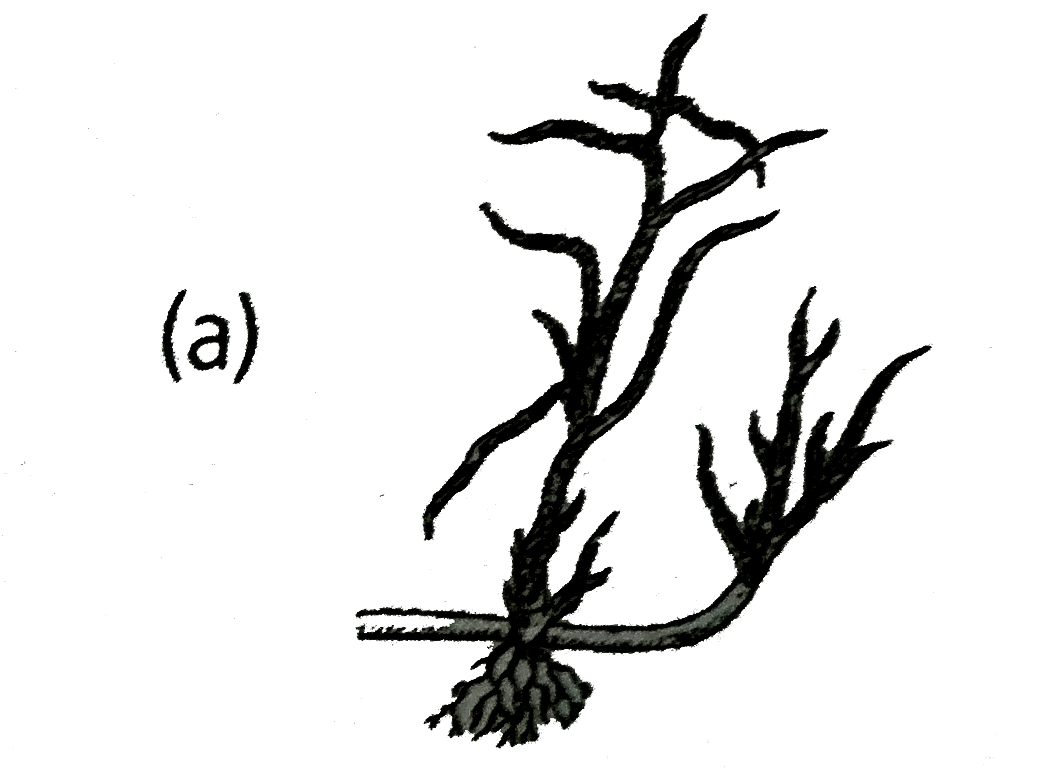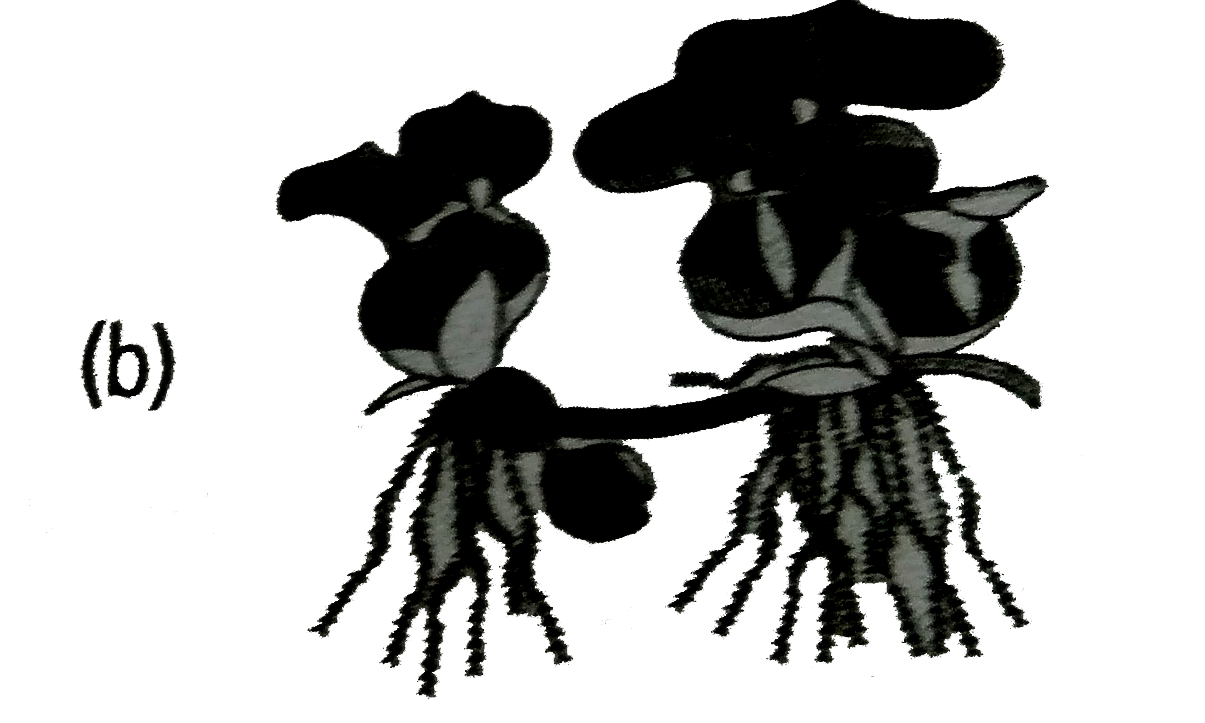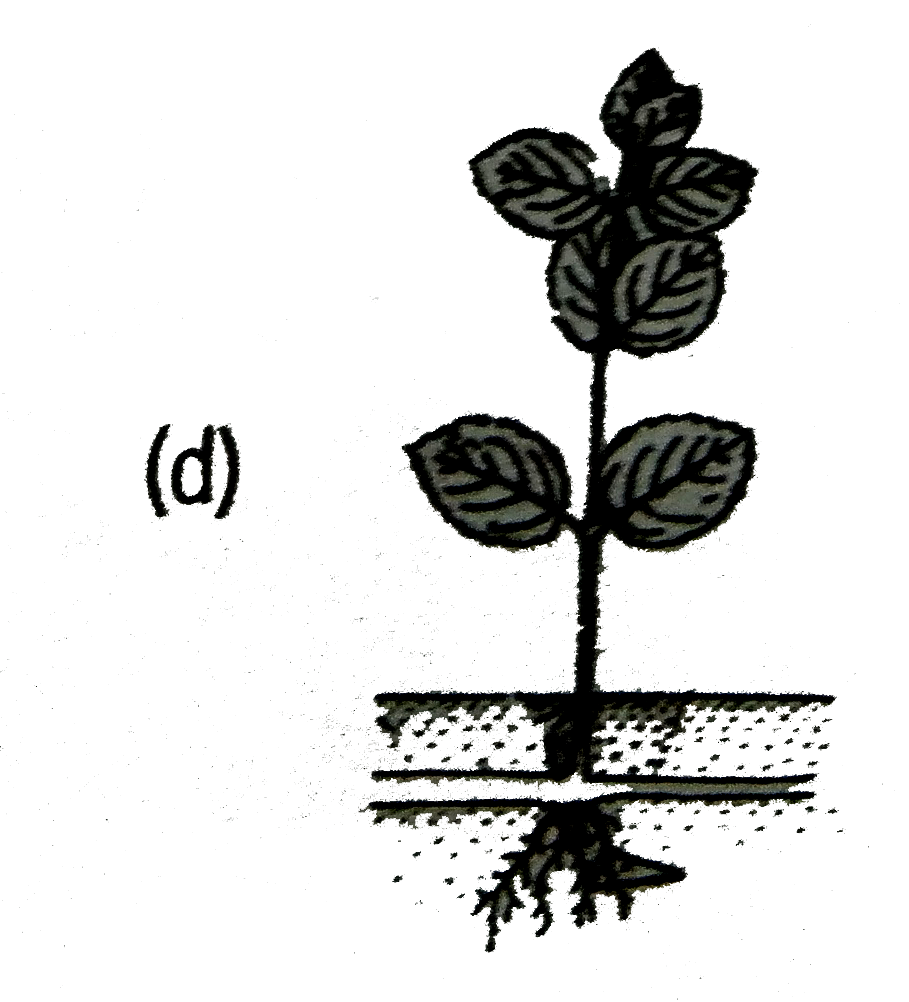A. The plant was introduced in India because of its beautiful flowers and shape of leaves
B. It can propagate vegetatively at a phenomenal rate and spread all over water body in a short period
C. It is very difficult to get rid off these plants A to C points are related to -
Dahlia
Water hyacinth
Azolla (water fern)
Mosses
The correct Answer is:B
To solve the question, we need to analyze the statements A, B, and C and identify which plant they are referring to.
1. Identify the Characteristics in Statement A:
- The plant was introduced in India due to its beautiful flowers and the shape of its leaves.
- This suggests that the plant is ornamental in nature.
2. Analyze Statement B:
- The plant can propagate vegetatively at a phenomenal rate and spread all over a water body in a short period.
- This indicates that the plant has a high growth rate and can quickly cover large areas, especially in aquatic environments.
3. Evaluate Statement C:
- It is very difficult to get rid of these plants.
- This implies that the plant is invasive and poses challenges for control and management in its environment.
4. Consider Possible Plants:
- The options given are Dahlia, water hyacinth, azolla, and mosses.
- Dahlia is primarily a terrestrial ornamental plant and does not fit the aquatic growth and invasive characteristics.
- Azolla and mosses are also not known for rapid vegetative propagation in water bodies.
- Water hyacinth, on the other hand, is known for its beautiful flowers, rapid growth, and invasive nature, often referred to as the "Terror of Bengal" due to its detrimental effects on aquatic ecosystems.
5. Conclusion:
- Based on the analysis, the points A to C are related to Water Hyacinth.
Final Answer:
The points A to C are related to Water Hyacinth.
---
- The plant was introduced in India due to its beautiful flowers and the shape of its leaves.
- This suggests that the plant is ornamental in nature.
- The plant can propagate vegetatively at a phenomenal rate and spread all over a water body in a short period.
- This indicates that the plant has a high growth rate and can quickly cover large areas, especially in aquatic environments.
- It is very difficult to get rid of these plants.
- This implies that the plant is invasive and poses challenges for control and management in its environment.
- The options given are Dahlia, water hyacinth, azolla, and mosses.
- Dahlia is primarily a terrestrial ornamental plant and does not fit the aquatic growth and invasive characteristics.
- Azolla and mosses are also not known for rapid vegetative propagation in water bodies.
- Water hyacinth, on the other hand, is known for its beautiful flowers, rapid growth, and invasive nature, often referred to as the "Terror of Bengal" due to its detrimental effects on aquatic ecosystems.
- Based on the analysis, the points A to C are related to Water Hyacinth.
The points A to C are related to Water Hyacinth.
Similar Questions
Assertion: Eichhornia crassipes was introduced in India because of its beautiful flowers and shape of leaves.
Reason: Water hyacinth propagate vegetatively at a phenomenal rate.View SolutionAssertion: Water hyacinth spread all over the water body in a short period of time and it is very difficult to get rid of them.
Reason: Water hyacinth propagate vegetatively at a phenomenal rate.View Solution
Knowledge Check
- Question 1 - Select One
A the plant was introduced in India because of its beatith flowers and shape of leaves
(B ) It can prapagate vegetatively at a phenomenal rate spread all cover water body in a short period
( C ) It is very difficult to get rid of these plants.
A to C statement are related to-ADahliaBWater hyacinthCAzolla (water fern)DMosses - Question 2 - Select One
This plant was introduced in India because of its beautiful flowers and shape of leaves but it became a notorious weed in Indain water bodies. Identify this plant.
A B
B C
C D
D
- Question 3 - Select One
Water hyacinth or "Terror of Bengal"
(a) Was introduced in India because of its beautiful foliage and flowers.
(b) is the most invasive weed found growing wherever there is stagnant water.
(c) Can propagate sexually by offset at a phenomenal rate.
Select the correct set of statements:AOnly (a).BOnly (a) and (c).COnly (a) and (b).DAll (a), (b) and (c).
Assertion : Water hyacinth is an invasive aquatic plant which speads all over the water in a short period of time.
Reason : Water hyacinth can reproduce vegetatively.View Solution1.Sarus is the largest bird found in India, being almost as tall as an average sized person. It is also the biggest flying bird in the world. Sarus usually move about in pairs. When they are with the young ones, they may be seen in groups of three to four. In summer, four or five of them may group together, especially near water bodies.
2. The featherless head of the Sarus is ash-coloured. The upper portion of the neck is red. The legs are pink and the beak is coloured slightly with green. The rest of the body is grey. The neck, legs and beak are long. When the wings are closed, their feathers hang over the tail. The male and female Sarus are alike. Sarus is one of the few birds in India which tradition does not allow to be killed. The male and female have great affection for one another. Once they have paired, they stay together for a lifetime.
3. The Sarus is not a shy bird. It lives on the ground itself to get its food - mainly water plants, grain, frogs and other living things. It builds nests too on the ground. Its voice is loud and ringing but at the same time sweet and pleasant to hear. Its flight is slow with methodical, uniform wing beats. Generally it does not fly very high from the ground. With the rains, the breeding season of the Sarus begins.
What is so special about the physique of the Sarus?View Solution1.Sarus is the largest bird found in India, being almost as tall as an average sized person. It is also the biggest flying bird in the world. Sarus usually move about in pairs. When they are with the young ones, they may be seen in groups of three to four. In summer, four or five of them may group together, especially near water bodies.
2. The featherless head of the Sarus is ash-coloured. The upper portion of the neck is red. The legs are pink and the beak is coloured slightly with green. The rest of the body is grey. The neck, legs and beak are long. When the wings are closed, their feathers hang over the tail. The male and female Sarus are alike. Sarus is one of the few birds in India which tradition does not allow to be killed. The male and female have great affection for one another. Once they have paired, they stay together for a lifetime.
3. The Sarus is not a shy bird. It lives on the ground itself to get its food - mainly water plants, grain, frogs and other living things. It builds nests too on the ground. Its voice is loud and ringing but at the same time sweet and pleasant to hear. Its flight is slow with methodical, uniform wing beats. Generally it does not fly very high from the ground. With the rains, the breeding season of the Sarus begins.
What are the two special things about the voice of the Sarus?View Solution1.Sarus is the largest bird found in India, being almost as tall as an average sized person. It is also the biggest flying bird in the world. Sarus usually move about in pairs. When they are with the young ones, they may be seen in groups of three to four. In summer, four or five of them may group together, especially near water bodies.
2. The featherless head of the Sarus is ash-coloured. The upper portion of the neck is red. The legs are pink and the beak is coloured slightly with green. The rest of the body is grey. The neck, legs and beak are long. When the wings are closed, their feathers hang over the tail. The male and female Sarus are alike. Sarus is one of the few birds in India which tradition does not allow to be killed. The male and female have great affection for one another. Once they have paired, they stay together for a lifetime.
3. The Sarus is not a shy bird. It lives on the ground itself to get its food - mainly water plants, grain, frogs and other living things. It builds nests too on the ground. Its voice is loud and ringing but at the same time sweet and pleasant to hear. Its flight is slow with methodical, uniform wing beats. Generally it does not fly very high from the ground. With the rains, the breeding season of the Sarus begins.
What is the similarity between male and female Sarus?View Solution1.Sarus is the largest bird found in India, being almost as tall as an average sized person. It is also the biggest flying bird in the world. Sarus usually move about in pairs. When they are with the young ones, they may be seen in groups of three to four. In summer, four or five of them may group together, especially near water bodies.
2. The featherless head of the Sarus is ash-coloured. The upper portion of the neck is red. The legs are pink and the beak is coloured slightly with green. The rest of the body is grey. The neck, legs and beak are long. When the wings are closed, their feathers hang over the tail. The male and female Sarus are alike. Sarus is one of the few birds in India which tradition does not allow to be killed. The male and female have great affection for one another. Once they have paired, they stay together for a lifetime.
3. The Sarus is not a shy bird. It lives on the ground itself to get its food - mainly water plants, grain, frogs and other living things. It builds nests too on the ground. Its voice is loud and ringing but at the same time sweet and pleasant to hear. Its flight is slow with methodical, uniform wing beats. Generally it does not fly very high from the ground. With the rains, the breeding season of the Sarus begins.
What is noteworthy about the affection of the Sarus?View Solution

